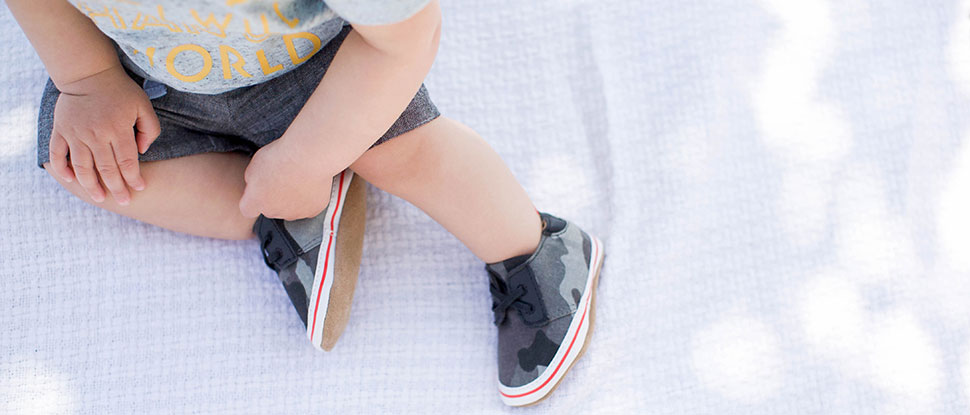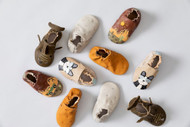What Are the Benefits of Soft Soled Shoes?
15th Jun 2018

Soft soled shoes have been growing in popularity for several decades, and we can thank recent advances in podiatric science for the uptick in parents choosing health-conscious footwearfor their children. For hundreds of years anatomists have claimed that the human foot, from its abundance of interlocking bones to its relative lack of cushioning, represents a major design flaw in the natural structure of the human body. Composed with these anatomical flaws in mind, shoes were often designed to correct biological imperfections. Only recently have we begun to emphasize foot health from the perspective that a shoe should honor the foot’s natural forms and impede in its architecture as minimally as possible.
Soft Soled Shoes are Flexible
Once thought to protect feet from the repeated harsh impact of walking, the hard sole has long been considered an indispensable safety feature in shoes. While a hard sole certainly has it place in footwear, especially when it comes to protecting against rough terrain, the inflexibility of a hard-sole shoe makes it inappropriate for everyday wear. As children’s feet develop, their muscles and tendons require full range of motion, so they can stretch, strengthen, and grow. Soft soled shoesSoft soled shoes allow children to move their feet in all the ways nature intended, while still providing adequate protection from daily hazards.
Soft Soled Shoes are Flat
With all the modern talk about arch support and padding, we have a tendency to assume that healthy shoes need to change the natural landscape of our feet. In fact, many shoes contain features that jeopardize the health of your baby’s feet by forcing them into unnatural postures and stances. Elevated heels, once thought to absorb the shock associated with walking, actually shift posture forward and create a perfect recipe for future knee pain. Toe springs—an extremely common feature that arcs the toes up and away from the ground—force muscles and bones to remain in a contracted and contorted position that can lead to problems down the line.
Arch support represents another danger to foot health, since children don’t begin to display this podiatric element until age 7. The biggest impediment to new walkers, however, is the abundance of padding added to many shoes. In order to develop a sense of balance, children’s feet must register the sensation of the ground beneath them. We all use our toes to grip the earth for stability, but children rely heavily on this natural inclination as they familiarize themselves with the strange new topography beneath them. Flat, both in the insole and outsole, soft sole shoes allow your child’s feet to grow and walk the natural way.
Soft Soled Shoes Are Roomy
As children’s feet grow, their bones are undergoing a long process of hardening and fusing that will det ermine their final structure. Due to their malleability, children’s feet are especially vulnerable to developing structural abnormalities that will follow them into later life. When shaped for aesthetics without a thought to foot growth, shoes can be too constricting for a growing foot, especially in the toe area. Tapered toes, for instance, squeeze the foot’s phalanges and the connected metatarsals, restricting the natural splaying that toes require to maintain proper posture and balance. Our soft soled shoes leave plenty of room for tiny toes to spread out, giving them all the space they need to grow strong and healthy.
When purchasing shoes for your infant, baby or toddler, remember to choose form as well as fashion. It’s fine to keep your favorite hard sole dress shoes for pictures, but when it comes to everyday wear, outfit your child in safe, gorgeously fashionable, and health-conscious soft soled shoes from Robeez.

